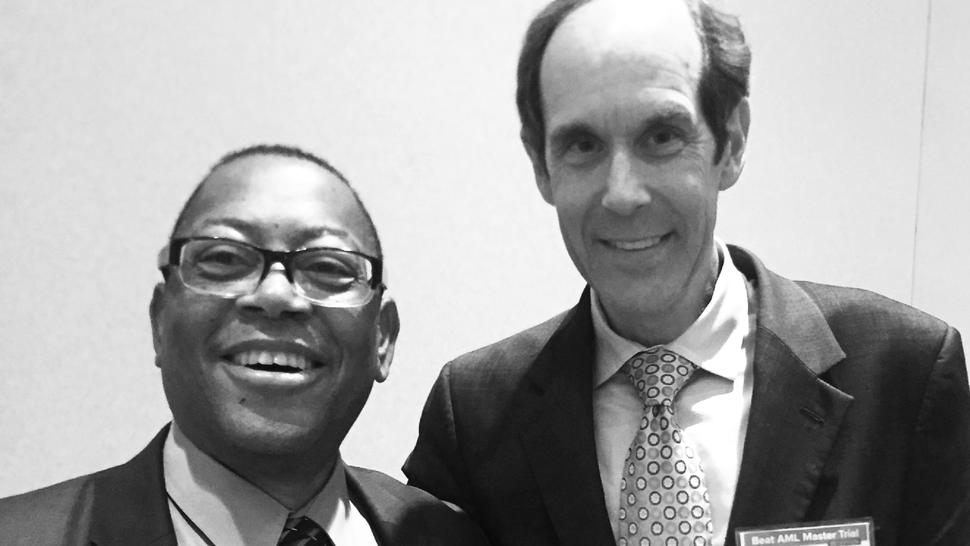Mel's Story
Once Terminal, Now Controllable
“My world changed in a matter of seconds,” said then-Army Major Mel Mann, on getting diagnosed with chronic myeloid leukemia (CML) in 1995. “I felt like I was underwater as I listened to the doctor’s voice, which floated toward me in sluggish and muffled waves.”
Mel was 37 and given 3 years to live. He needed a bone marrow transplant, but the problem was finding a match, as few African Americans were on the marrow donor registry. “Thoughts of my 5-year-old daughter raced through my mind,” he said. “Blindsided, I wondered if I would make it to my 40th birthday.” He retired from the army, moved to Atlanta, and began running bone marrow drives.
I saw a clinical trial as a chance to get tomorrow’s medicine today.
Three years later, in 1998, and with no match of his own, Mel’s white blood cell count rose and his health declined. An avid runner, he couldn’t even jog one city block. In August of that pivotal year, he enrolled in a clinical trial testing a new targeted therapy, imatinib (Gleevec).
He knew that other African Americans were concerned about “the dark history of unethical experimentation,” but, he said, “I saw a clinical trial as a chance to get tomorrow’s medicine today.” By January 1999, he was back to running marathons.
At the same time Mel was fighting to survive, Oregon Health & Science University oncologist Dr. Brian Druker developed Gleevec and was working to get this game-changing drug tested in patients. It took lobbying the drug company for 4 years, but trials finally began in 1998.
I saw patients’ hope for the future restored. Now, 20 years later, I’ve witnessed all that these patients have experienced—weddings, children, grandchildren—and many more life events...
“During the clinical trials, we saw this miracle: once the patients were up to effective doses, we got a 100% response rate,” said Dr. Druker. “I saw patients’ hope for the future restored. Now, 20 years later, I’ve witnessed all that these patients have experienced—weddings, children, grandchildren—and many more life events that wouldn’t have been possible without Gleevec.”
Mel, a 26-year cancer survivor and the oldest living on Gleevec, credits Dr. Druker and the drug for allowing him to see his daughter grow up and become a physician.
“I’d tell someone newly diagnosed with CML that today you can live a normal, long life. Keep setting goals and don’t lose hope. Take your medication and live every day.”
